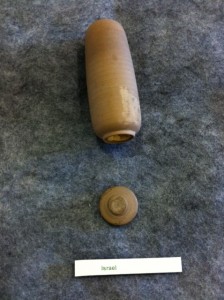By: Amy Chen, CLIR Postdoctoral Fellow
Please see Cool@Hoole’s previous post on the Kate Webb Memorial Miniature Book exhibition.
The history of miniature books is both long and international. Scholars date the appearance of the duodecimo (small size) book to the beginning in the fourteenth century, although miniature books originate with the use of clay tablets by Babylonians around 1750 BC. As early as 900 AD, the Japanese created tiny wood block prints on scrolls. Peter Schoffer, Johann Gutenberg’s protégé, assembled the first miniature book using movable type in Germany in 1468. William Secker published the first American miniature book, A Wedding Ring, in 1690.
However, miniature books did not become widespread until the eighteenth and nineteenth centuries. Napoleon, a collector and reader of miniature books, helped contribute to the rise of the art form in continental Europe. In the United States, settlers moving westward chose to convert Bibles, hymnals, almanacs, and other reference volumes into tiny editions to make them more portable for their journey.
By the twentieth century, tourists bought miniature books as keepsakes. Visitors to the 1904 Chicago World’s Fair purchased miniature books encapsulated in walnut shells as souvenirs. Queen Mary commissioned a doll’s house in 1920 on behalf of the people of the United Kingdom. To fill the doll house’s library, 200 miniature books with blank pages were mailed to the most prominent writers of the era. Now, Queen Mary’s doll’s house is a popular attraction within Windsor Castle.
The majority of contemporary miniature books are printed as artists’ books. Artists’ books are created to be works of art and are generally hand-made in limited editions. Miniature artists’ books may resemble conventional books, but they also can be made into fold-up or pop-up styles to surprise and delight readers.


